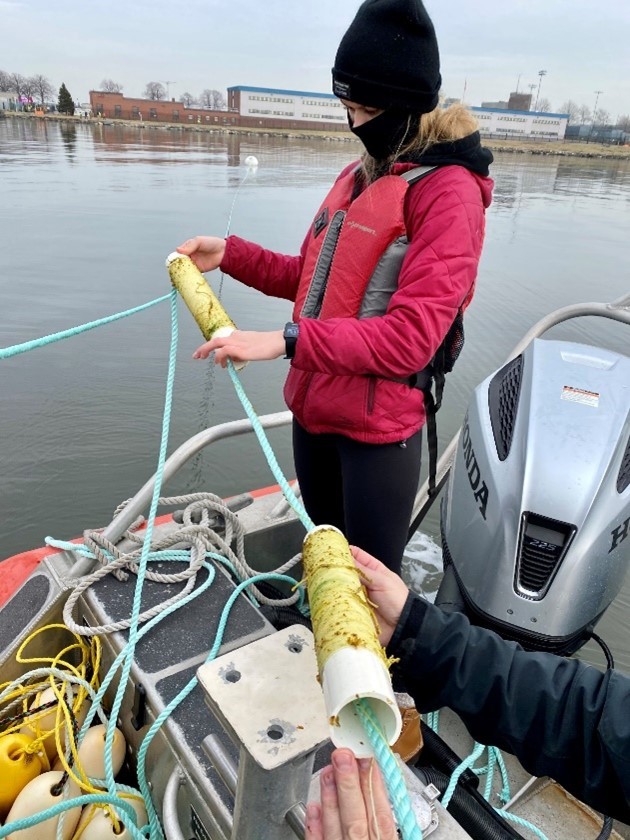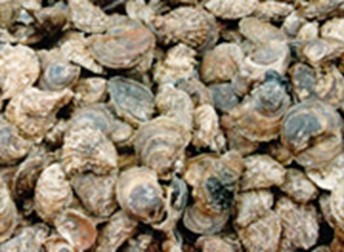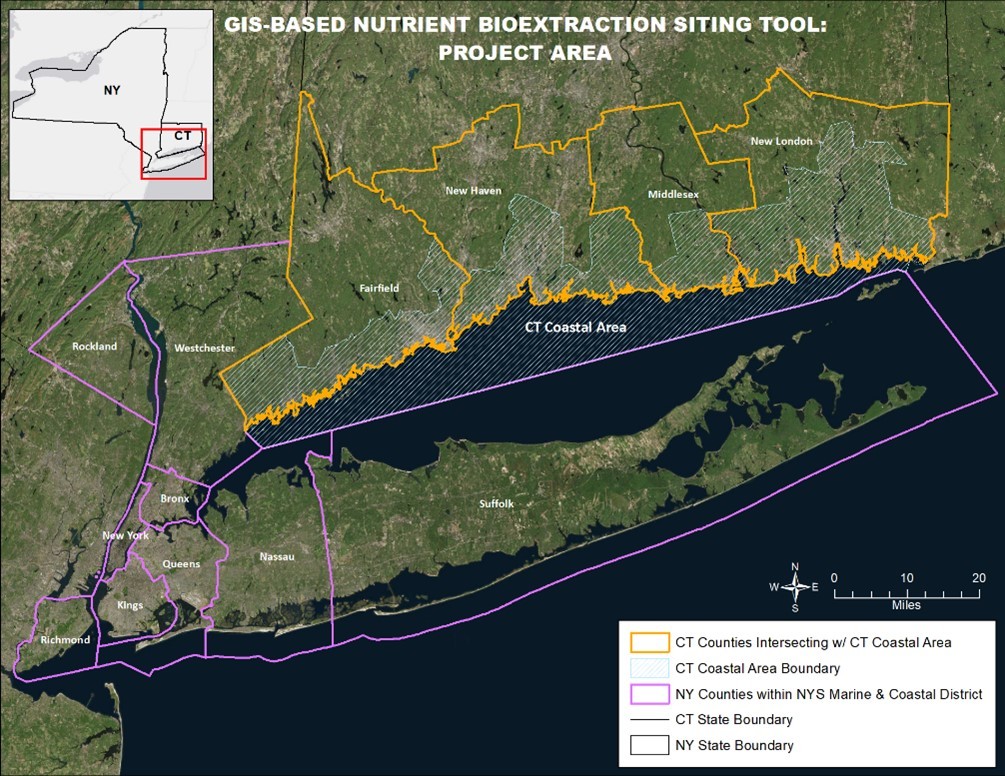Long Island Nitrogen Action Plan (LINAP) – Monthly Newsletter |
Nutrient Bioextraction InitiativeIn 2018, the New York State Department of Environmental Conservation (NYSDEC), the Long Island Regional Planning Council (LIRPC), and New England Interstate Water Pollution Control Commission (NEIWPCC) partnered to start the Nutrient Bioextraction Initiative, with funding from EPA’s Long Island Sound Study (LISS). The goal of the Nutrient Bioextraction Initiative is to improve water quality in New York and Connecticut marine waters by removing excess nitrogen through the cultivation and harvest of seaweed and shellfish. The Initiative provides information to decision-makers to help them develop guidelines needed to facilitate public and private seaweed and shellfish farming and harvest operations in their coastal waters. Sugar Kelp Fertilizer Pilot StudySugar kelp is an ideal organism to study for the Nutrient Bioextration Initiative. It absorbs and stores nitrogen from surrounding water during its growing period in the winter and spring, making it useful in removing nitrogen pollution. In addition to its growth patterns, it is also used as a food source in many parts of the world. A pilot project using sugar kelp was initiated on the south shore of Long Island in the Great South Bay and Hempstead Bay in the winter of 2019/2020. In mid-January 2021, the study was replicated at sites on the north shore of Long Island with varying physical and environmental conditions. These sites included Northport Harbor, Milton Harbor in Rye, NY and the East River in the Bronx. Growth was monitored between February and May. Growth was only successful at the East River site. Kelp samples were tested for nutrients, pathogens, heavy metals, organic contaminants, and pesticides. Only nitrogen and carbon content analyses were performed for Northport and Milton Harbor due to the limited kelp growth. The results showed that the kelp grown in the East River had higher total nitrogen and total carbon content than the other sites on the north shore, and when compared to the 2019/2020 south shore sites, the kelp did not appear to have higher overall PCB, pathogen, or heavy metal readings at the time of harvest. The East River kelp did, however, appear to have the highest levels of a class of chemicals called polycyclic aromatic hydrocarbons (PAHs), that are associated with the burning of coal, oil, gasoline, or other organic substances, compared to the 2019/2020 south shore sites. An additional part of the pilot project evaluated the potential for using the harvested sugar kelp as an amendment for local agricultural crops. Numerous kelp and seaweed fertilizer products are currently available on the market, but if kelp can be grown, harvested, processed, and utilized locally, it would improve the sustainability of both the marine and agricultural industries on Long Island. By using locally sourced kelp instead of imported products, Long Island farms could create a market to support nitrogen reduction efforts in local waters through seaweed bioextraction. This project investigated the impact of two different types of kelp amendments and application methods on plant and soil properties. The results of this study, which will be available this Spring, will inform the development of a local bioextraction industry, and will provide quality-controlled data on the public health and food safety implications of cultivated seaweed that can be used by federal, state, and county regulators. A third year of the fertilizer study will be completed this Fall.
Photo Credits: (Left) Installing sugar kelp lines in the East River, Bronx. Dr. Caterina Panzeca; (Right) Sugar kelp, drying at the Long Island Horticultural Research and Extension Center, Dr. Deborah Aller Ribbed Mussel Pilot StudyRibbed mussels are native to the Long Island Sound and New York City, with historically large populations, and are known to reduce nutrients in the water and stabilize shorelines. Ribbed mussels are not grown for human consumption, so they can be grown and harvested in polluted waters. Also, since they are not used as food for humans, their cultivation presents an opportunity to explore other market opportunities. To understand the nitrogen removal capacity of ribbed mussels, a pilot project to study them is in the beginning stages at two locations in Long Island’s coastal waters. The nitrogen removal rates of ribbed mussels have been studied on a limited basis, so information from this study will be combined with the results from other studies and used by resource managers and regulators to have a comprehensive understanding of the value and efficacy of ribbed mussels as a nutrient reduction strategy. This project will attempt to produce ribbed mussels in a hatchery – an uncommon practice – and shellfish harvested at the end of the study will be assessed for use as animal feed. The study is scheduled to begin this Spring.
Photo Credit: Long Island Sound Study Economics of Commercial Bioextraction Feasibility StudyIn the Fall of 2021, NEIWPCC, in cooperation with the LISS, the NYSDEC and its partners, invited proposals for the first phase of an economic study on bioextraction within the Long Island Sound. The purpose of this project is to determine the feasibility of commercial operations using seaweed and/or shellfish in the New York and Connecticut marine waters of the Long Island Sound for the express purpose of bioextraction. The results of the project, which is slated to begin this Spring, will make recommendations about the most economically viable species and markets (including non-food product uses) for bioextraction and help inform the development of a local bioextraction industry. A second phase of the study will provide more detailed economic and market information on the recommended markets and species. Phase 1 of the study is expected to be complete in early 2023. GIS Tool to Help Identify Suitable Sites for BioextractionThe New York and Connecticut Shellfish and Seaweed Aquaculture Viewer is an interactive online map developed to aid in the identification of potential locations for shellfish and seaweed farms within New York’s marine and coastal district and Connecticut’s coastal area. The map, which provides detailed information on natural resources, environmental conditions, navigation, regulatory requirements, and potential use conflicts is available on the Long Island Sound Study website along with a Story Map guide to introduce users to the Viewer. The goal of the tool is to assist prospective, new or current aquaculture growers in siting new or expanding existing shellfish or seaweed operations and bioextraction projects.
To sign up for our LINAP Newsletter, visit our LINAP website or click here. |
Footer
Contact
STAY INFORMED
Enter your email address to receive email updates from the LIRPC:






